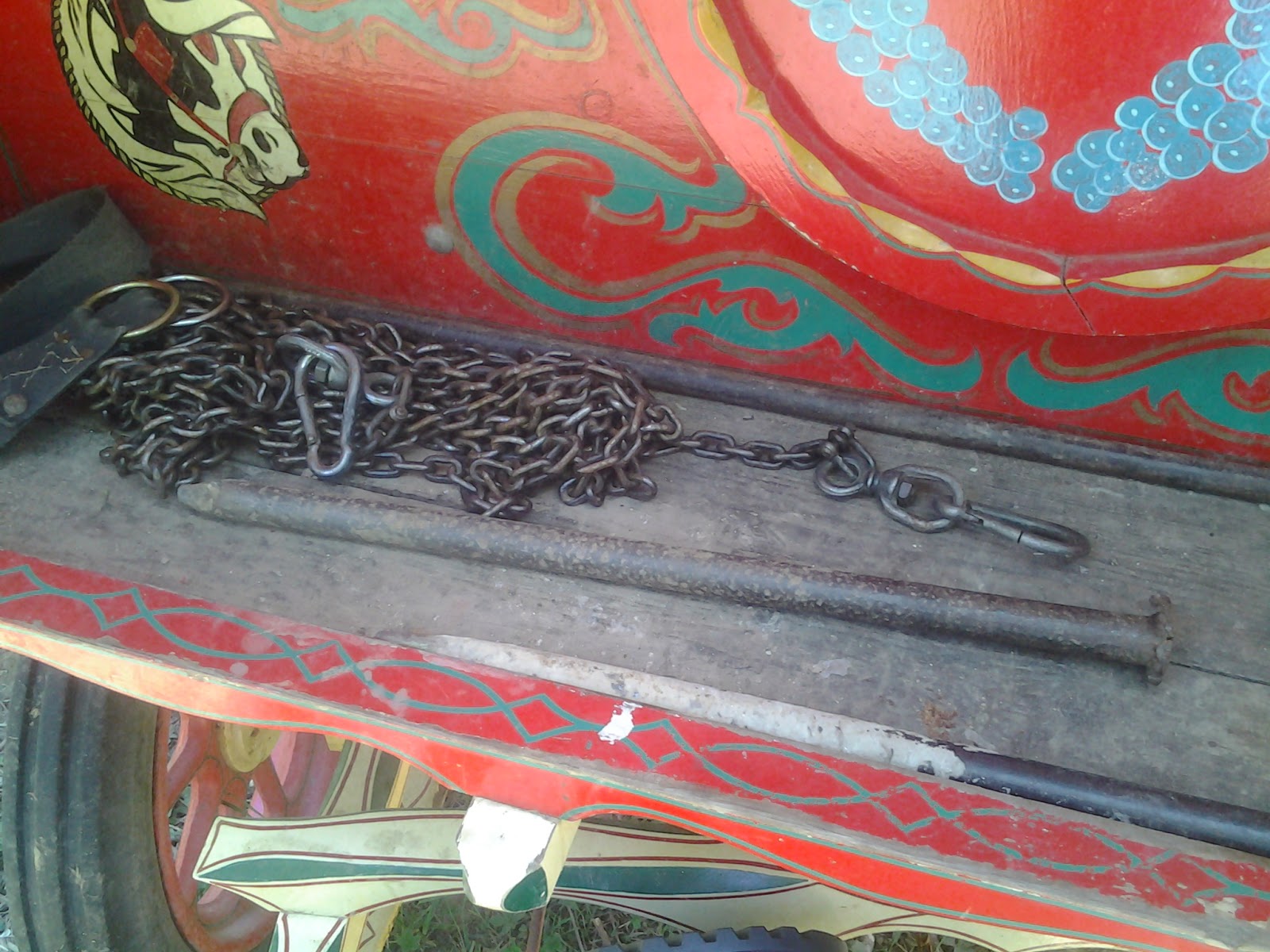Unless l'm offered a field with a good fence for the night, l need some way to secure my horse, so that he doesn't wander into the road, so l have to tether it. In the old days when armies had cavalry, when they were on a campaign, all the horses were tethered or picketed, even expensive chargers belonging to generals.
Some people might think it was a bad idea or cruel to tether a horse. Done well it is very good for a horse, it makes them much safer and calmer, prevents them getting injured.
l get him used to the feel of a rope around his legs, then a piece of plastic hose pipe and then a chain. This is a great thing to do, even if you never tether your horse, because when your horse feels something strange around its legs it is less likely to panic. If your horse is in harness it will not worry if it gets its leg over a trace, or if it gets its leg caught in some sheep fencing, it will wait for you to come and help it, if it isn't used to things round its legs, it may well break its leg as it frantically tries to release itself. A horse that is good on a tether learns to stand still and wait, it's also better at being shod.
Many young horses are put straight on a tether, without any preparation and after a struggle they learn all this themselves, without you doing anything, but there is a small risk. Until they are good on a tether, l tether them on level ground and not near anything that will injure them. I tie them up first in a yard for a few hours, until they are hungry, then tether them on some nice sweet grass, they soon get the hang of it and look forward to it. I keep an eye them.
After a while horses love their tether, they learn to use it to rub and massage themselves.
Tether pin and tether chain
To tether them l have a length of chain about 25 feet [8m] long, it has three swivels in it, otherwise the chain will go solid when the horse rolls, and that's one way they can injure themselves. The peg, or tether pin, is 25mm in diameter,[1"] and about 600mm [2'] long, with a point on one end and a small head on the other. I may need a longer one on soft ground, on sandy ground l have to fix the chain to a shrub or tree.
Swivel and clip on tether chain
To the end of the chain you need a neck strap, [l use a length of car safety belt], to which l fix a clip, or l can fix the chain to a head collar.
Neck strap made from car safety belt
When l stop on the sides of roads there often isn't enough grass for the whole length of the chain, so l may have to move the tether several times, it depends on the quality of the grass. The grass near the hedge will normally be coarse and long and the horse will prefer the shorter sweeter grass near the road. I try to tether the horse near the back of the wagon at night time so that l can see it out of the window and make sure it's ok. It's lovely hearing the horse crunching grass at night time. The horse is glad to be near the wagon too, it feels safer. I'm careful not to tether the horse so close to the wagon that it can rub its bottom on it. He'll wait until 3 am to do it and wake me up.
Horse tethered on Blackheath, London
Sometimes at horse fairs, children like to go round at night letting horses off their tethers. The younger horses will run around but the older more experienced horses tend to just stay near their own wagon. I remember one morning at Stow horse fair, in the Cotswolds, waking up and my old mare was lose, but she was just standing between the shafts waiting for me to get up, and that was lovely.
Belle rolling by Soulby Bridge, whilst tethered
Other advantages of tethering a horse is that it learns to cross its legs over to move sideways and sidepass, a very good thing for a driving or riding horse. A horse that has been tethered alongside a road soon gets used to lorries and cars. A horse that ties up well and tethers well is more valuable. It's also possible to use pieces of grass that are not fenced.
Horses tethered at Appleby






No comments:
Post a Comment